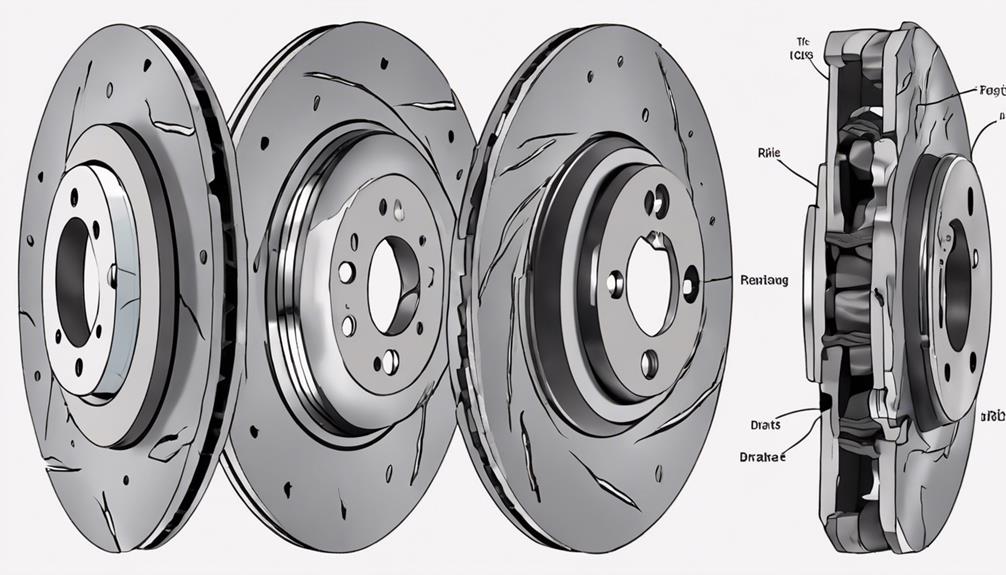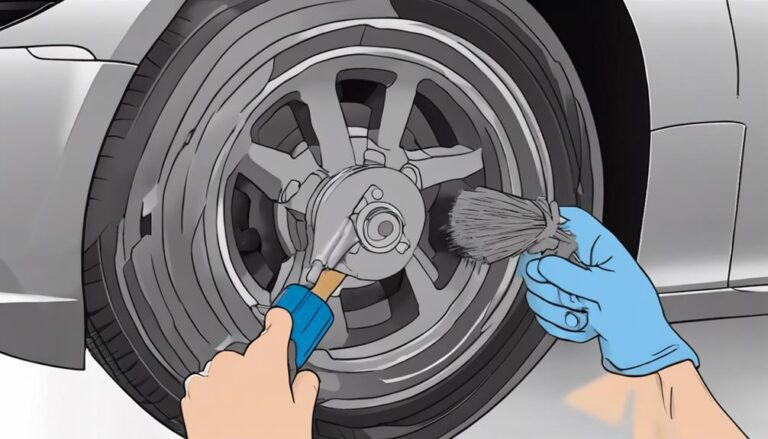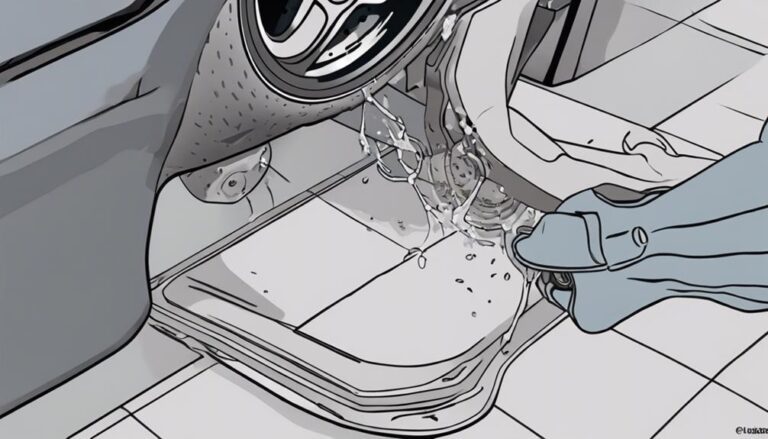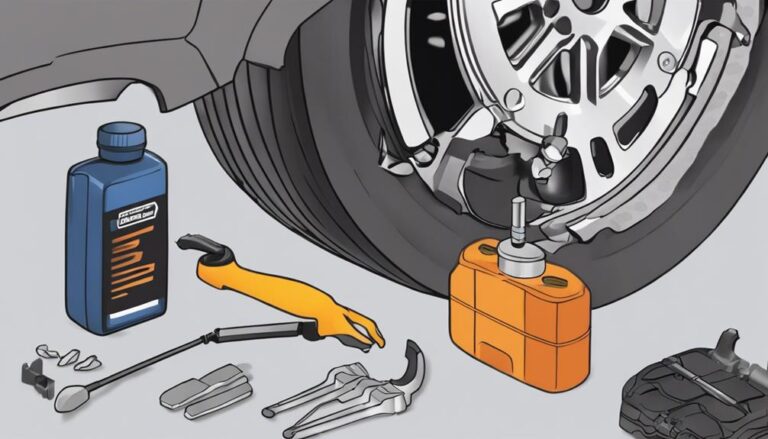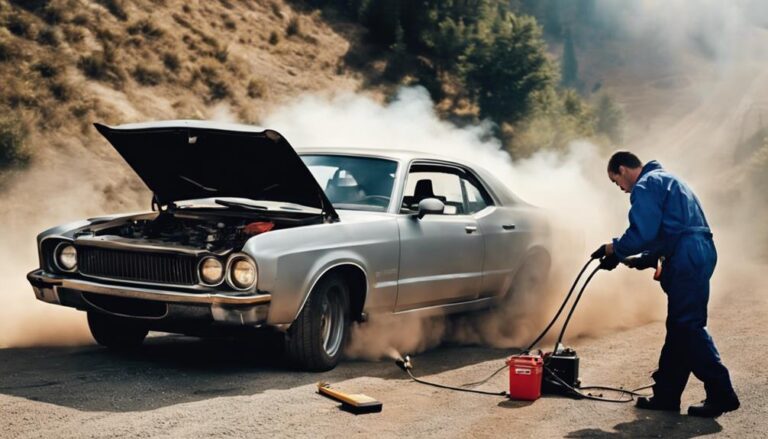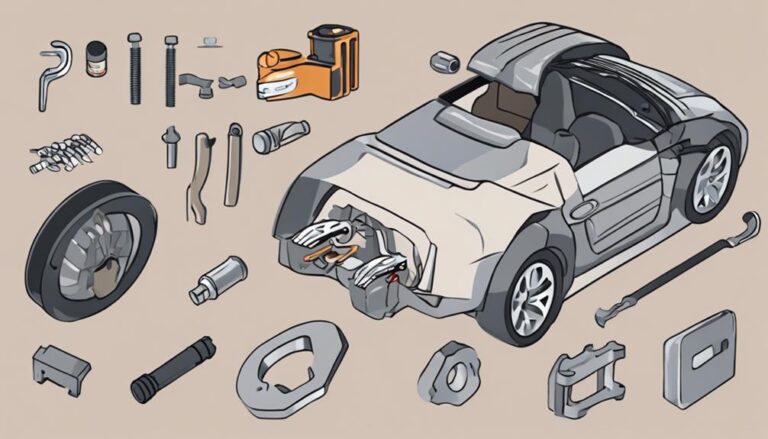Why Does Your Car Show Signs of Brake Rotor Damage?
If you're noticing your car exhibiting signs of brake rotor damage, did you know that approximately 20% of all car accidents are due to brake failure?
Understanding why your car shows these signs can help prevent potential risks on the road. Whether it's the result of overheating, wear and tear, or other factors, addressing brake rotor issues promptly is crucial for your safety.
So, what are the common causes behind brake rotor damage, and how can you ensure your braking system is in top condition?
Key Takeaways
- Neglecting brake maintenance leads to severe rotor damage and compromises braking performance.
- Timely maintenance prevents costly repairs, maintains optimal performance, and reduces accident risks.
- Understand rotor wear patterns to identify damage early and extend the lifespan of your braking system.
- Prevent costly repairs by regularly inspecting brakes, replacing pads on time, and using brakes judiciously.
Common Signs of Brake Rotor Damage
If you experience vibrations or pulsations while braking, it could be a clear indication of potential brake rotor damage. Common signs of brake rotor damage include high-pitched squealing or grinding noises during braking, a shaking steering wheel, brake pedal pulsing, and long stopping distances. When these issues arise, it's crucial to address them promptly to ensure your safety on the road.
Rotor replacement or resurfacing may be necessary to resolve brake rotor damage. Rotor replacement involves installing new rotors to replace damaged ones, while rotor resurfacing entails machining the existing rotors to restore a smooth and even surface. Both methods aim to improve braking performance and ensure the longevity of your brake system.
Ignoring these signs of brake rotor damage can lead to further deterioration of the braking system, compromising your ability to stop efficiently and safely. By staying vigilant and addressing any rotor issues promptly through replacement or resurfacing, you can maintain optimal brake performance and enhance overall driving safety.
Impact of Brake System Neglect
Neglecting proper maintenance of your brake system can lead to severe rotor damage, significantly compromising both braking performance and overall safety on the road. Safety precautions should never be overlooked when it comes to rotor maintenance. Regular inspections and timely repairs are crucial to prevent issues such as warped or worn brake rotors.
Ignoring signs of brake rotor damage not only increases the risk of accidents but also leads to costly repairs. Inadequate maintenance of the brake system can have a direct impact on your vehicle's handling and control, posing a threat to your safety and that of others on the road.
Importance of Timely Brake Maintenance
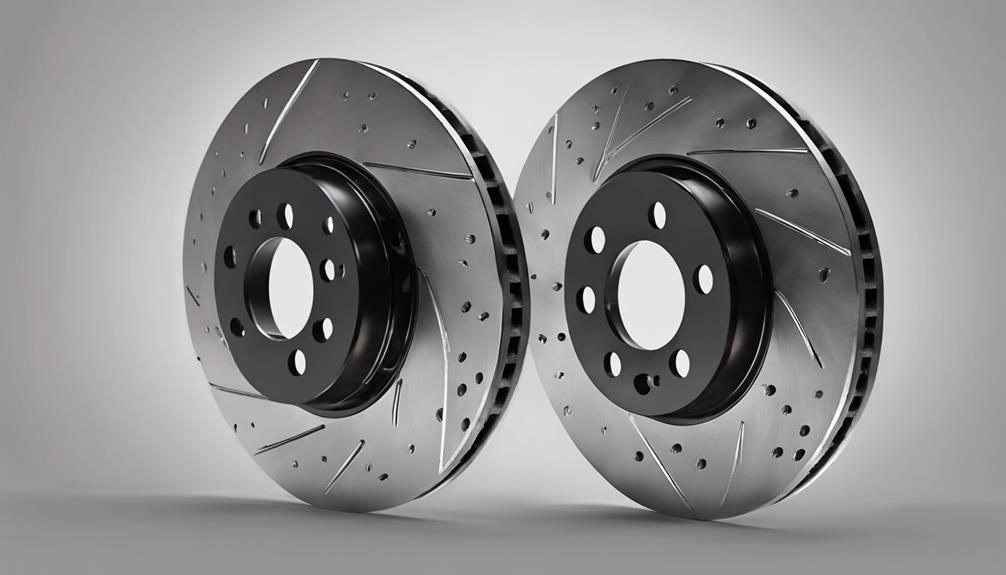
Ensuring timely maintenance of your vehicle's brake system is essential for preventing costly repairs and maintaining optimal brake performance. Brake rotor maintenance plays a crucial role in this upkeep. By conducting regular inspections and addressing any issues promptly, you can prevent rotor damage and extend the lifespan of your braking system. Neglecting brake maintenance increases the risk of rotor damage, which can compromise your safety on the road. Early identification of rotor damage through routine checks enables you to address problems before they escalate, ensuring efficient brake performance and reducing the likelihood of accidents.
Proper maintenance not only safeguards your rotors but also enhances overall braking efficiency. By keeping your brake system in top condition, you reduce stopping distances and maintain control of your vehicle in critical situations. This attention to detail not only promotes safety but also contributes to a smooth driving experience. Investing in timely brake maintenance is a proactive approach that pays off by enhancing both safety and performance on the road.
Understanding Brake Rotor Wear Patterns
To understand brake rotor wear patterns, it's crucial to recognize how different driving habits can lead to specific types of wear on the rotors. Here are some key points to consider:
- Frequent Braking: Stop-and-go driving or riding the brakes can result in accelerated wear on the rotors, leading to uneven surfaces and potential warping.
- High-Speed Driving: Driving at excessive speeds and then braking hard can generate high levels of heat on the rotors, causing heat spots and potential warping.
- Corrosive Environments: Exposure to moisture, road salt, or other corrosive elements can lead to surface pitting and rust on the rotor, affecting brake performance.
To maintain your rotors and enhance brake performance, consider these rotor maintenance tips and brake performance improvements. Regularly inspect your rotors for wear patterns, address any issues promptly, and ensure proper bedding-in of new brake pads and rotors to extend their lifespan and optimize braking efficiency.
Preventing Costly Brake Rotor Repairs
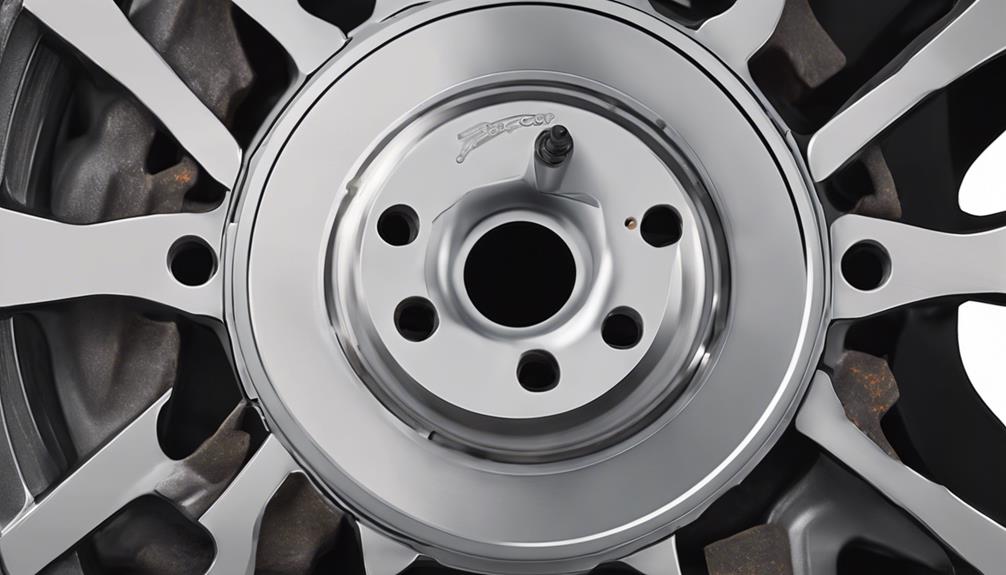
Regular maintenance practices and timely replacement of brake rotors are crucial steps in preventing costly repairs down the line. By investing in preventive measures and cost-saving strategies, you can ensure the longevity of your brake system and avoid unexpected expenses. Here are some key strategies to help you maintain your brake rotors and save money in the long run:
| Preventive Measures | Cost Saving Strategies |
|---|---|
| Regular brake inspections | Invest in quality brake components |
| Replace brake pads on time | Address brake issues promptly |
| Monitor brake fluid levels | Opt for timely rotor replacement |
| Avoid sudden braking | Perform regular maintenance checks |
| Use brakes judiciously | Seek professional advice when needed |
Frequently Asked Questions
What Is the Most Common Cause of Rotor Damage?
Improper maintenance and excessive heat are the primary culprits behind rotor damage. Corrosion and wear and tear also play significant roles. Addressing these issues promptly is crucial to ensure safety and maintain optimal braking performance.
How Do I Know if My Brake Rotors Need Replacing?
Feeling uncertain about brake rotor maintenance? Keep an eye out for rotor wear indicators like squealing, vibrations, or longer stopping distances. These signs suggest potential issues, so don't ignore them. Get those rotors checked promptly.
What Are the Symptoms of a Warped Rotor?
If you suspect rotor repair is needed, watch for symptoms like steering wheel vibrations, pedal pulsation, or uneven brake pad wear. Warped rotors affect brake performance and driving safety, potentially causing longer stopping distances.
How Much Is It to Replace Rotors?
When replacing rotors, consider the cost comparison between DIY kits and professional installation. Prices range from $200 to $600 per axle. DIY kits start at $30, but safety is key. Seek multiple quotes for the most cost-effective option.
Conclusion
Now that you understand the signs of brake rotor damage and the importance of timely maintenance, you can ensure your safety on the road.
By addressing issues promptly and preventing neglect, you can avoid costly repairs and potential accidents.
Remember, taking care of your brake system is essential for a smooth and efficient driving experience.
Don't wait until it's too late – prioritize your brake maintenance to keep your car in top condition.

